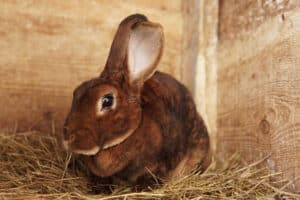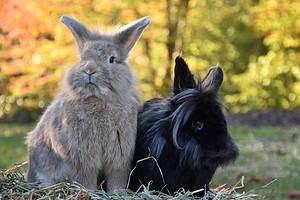Some families choose to have cats, dogs, birds, or reptiles as pets, but many forget the sweet, cuddly nature of rabbits! Rabbits make excellent pets — they are gentle, train responsibility and habits into children, and live as long as many dogs do!
When getting a rabbit for a pet, consider adopting a Holland Lop rabbit. These unique rabbits are one of the smallest domesticated rabbits to buy, making them a perfect fit for families with young children and/or families that live in a smaller living space but still want to take care of an animal.
Discover the beauty of having Holland Lop rabbits as pets, their purchase cost, and the other prices in 2024 for a Holland Lop rabbit, like its supplies, veterinary bills, and more.
What are Holland Lop Rabbits?
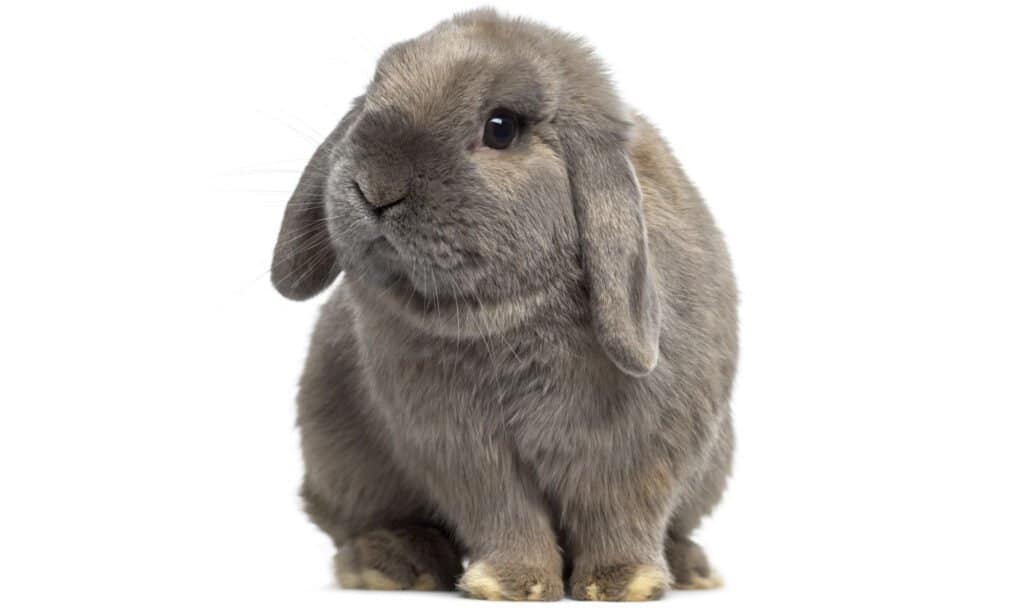
Holland Lop rabbits have a distinctive floppy ear appearance.
©Eric Isselee/Shutterstock.com
Named for their ears and heritage, Holland Lop rabbits have “floppy” ears and hail from the Netherlands.
Holland Lop rabbits were crossbred into existence. A breeder named Adriann de Cock mated a male English Lop with a doe from a litter begotten from a Netherland Dwarf rabbit and a French Lop. Fourteen years later in 1964, Netherlands’ Governing Rabbit Council accepted the hybrid breed as a recognized breed. In 1976, the American Rabbit Breeders Association did the same.
Today, Holland Lop rabbits rank among the top breeds purchased by families for their size, sweet nature, and fluffy coat. In fact, according to Wag, the Holland Lop is the number one breed adopted by rabbit parents across the world.
Since their creation in the 1950s, Holland Lop rabbits have evolved a long way. They now come in nearly 30 different colors and their disposition is both sweet and good-natured. They’re often considered a great “first rabbit” for children or adults who have never owned a rabbit before. It’s no wonder Holland Lop rabbits rank as the top rabbit to buy based on their small size and relatively low-maintenance needs.
Holland Lop rabbits make great pets — but how much do they cost in 2024, and what is the weekly, monthly, and yearly cost of maintaining this rabbit? Keep reading to find out.
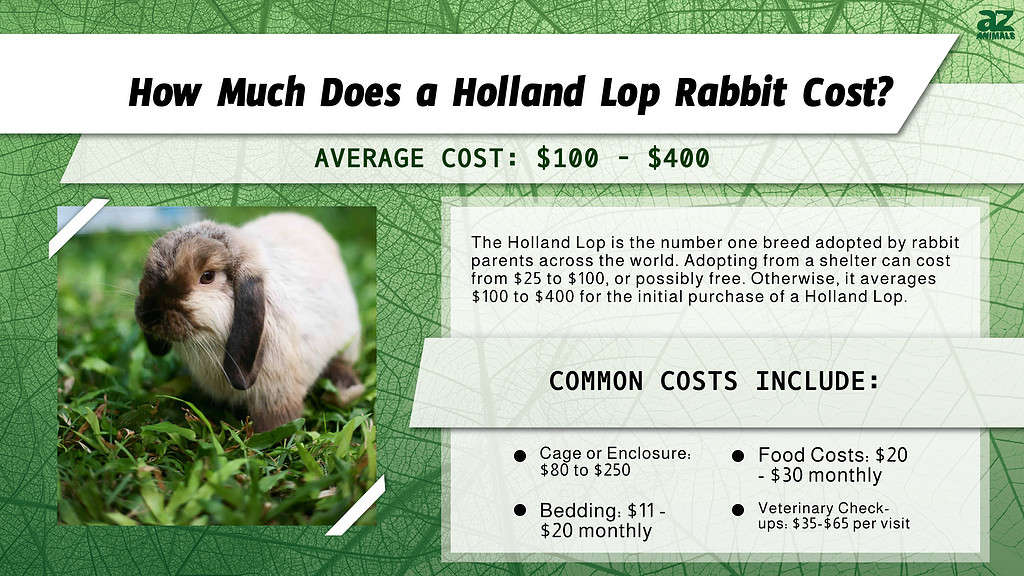
Purchase Cost
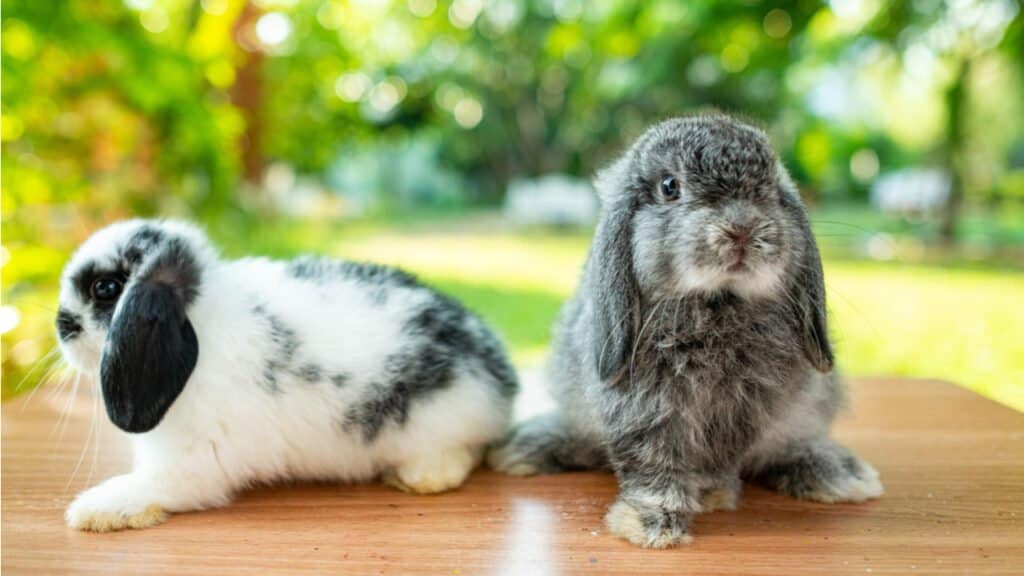
Holland Lop bunny costs will depend on age, markings, and breeder.
©suriyachan/Shutterstock.com
The price of the rabbit itself will vary depending on where you get it, at what age it is, and its markings.
Most reputable breeders will sell Holland Lop rabbits for a few hundred dollars. Most of the time, the prices oscillate between $100 and $400. You may be able to get the rabbit a bit cheaper, though. For example, your local animal rescue or shelter may have a Holland Lop rabbit available to adopt for $25, up to $100 — depending on how they price animal adoptions. In addition, some rescues have sponsored adoptions, which would make your rabbit free! Or, if you have a friend or neighbor whose rabbit just had a litter, or can no longer care for the pet themselves, you may get your Holland Lop for significantly less than you would at a breeder or shelter.
On average, Holland Lop rabbits cost generally the same for different colorings — though some rare colors like Blue Chinchilla will fetch a higher price.
Color doesn’t play as much of a role as pedigree in rabbits. You can, and will, pay more for your Holland Lop if you use a breeder that has a long, successful history of breeding beautiful rabbits. Getting your Holland Lop already vaccinated and microchipped may also drive the price higher.
Supplies and Setup
Like with any new pet, you’ll need to grab supplies to set up your home for your Holland Lop. Because they’re a small breed, Holland Lops tend to not need as much room as larger rabbits, like the Flemish giant rabbit. The basic supplies you’ll need to start off your Holland Lop rabbit include:
- Food (about $40 for a 10-pound bag).
- A cage or enclosure (can range from $80 to $250).
- Bedding (depending on what you buy, will range from $11 to $20 for 10 liters worth).
- Hay (costs $35 for 12 pounds).
- Grooming supplies (one brush costs about $20).
- Water and food bowls ($12 each).
- Pet carrier ($34).
- Toys ($12 for a kit of natural bunny toys).
- Treats ($8 for a 100-gram bag of treats).
The starting setup of your Holland Lop rabbit will change as they get used to their environment, but as a bunny or kit, they’ll need a little more guidance and training to establish a routine. Because Holland Lops are intelligent creatures, they lend themselves to being trained. It also means they may get bored of toys quickly, so having several in a separate area is a good idea. Holland Lops are also inquisitive, and they will enjoy exploring any new additions to their enclosure.
Let Them Get Acquainted
Rabbits are notoriously timid creatures, and a move to a new place away from their litter is frightening. Set up their area before you bring them home so they can settle right in. Don’t be too overbearing, though you’re excited to spend time with your new pet. Allow your rabbit two or three days to acclimate to their new nest and don’t push for serious playtime until they seem a little engaged or interested in you.
When adopting a young kit, decide if you’d like to house-train it or not. If so, you’ll need litter pans, litter, and lots of Timothy hay. If not, make sure to get absorbent bedding for their litter box. Additional features you can add to their enclosures that aren’t necessary — but may be nice to have — include a separate exercise pen connected to their enclosure, a hay rack, and a group of different brushes to groom your rabbit.
Ongoing Expenses
Outside of the initial setup and purchase of your Holland Lop rabbit, there isn’t too much of a strain on your bank account to keep them happy and healthy. Your biggest expense will most likely be veterinary care, especially if you choose to get your rabbit spayed or neutered (which is recommended).
Food
It’s common to spend about $20 to $30 a month on your rabbit’s food.
Like other rabbits, the best food to feed Holland Lop rabbits remains high-quality pellets. You’ll usually want to grab the types with low protein, high fiber, and a balance of vitamins and minerals. Timothy hay is usually the best bet for a Holland rabbit’s teeth and digestive tract. If the pellet food you give your rabbit has alfalfa hay, do not give additional alfalfa to them.
When it comes to treats, most Holland Lop adults can handle them well if you stick to feeding them natural food like fruits and vegetables. If in doubt, your veterinarian can suggest the best type of treats for your Holland Lop based on their constitution and weight.
No matter what you choose to feed your Holland Lop rabbit, ensure they always have access to unlimited fresh water.
Bedding
Depending on whether you litter train your Holland Lop or not, bedding may become a larger expense. For litter-trained rabbits, bedding should be changed frequently but not as often as with non-trained rabbits. Because non-litter-trained rabbits will use the bathroom across their bedding, you’ll need to both spot-clean and replace the entire thing at least once a week, if not more. With bedding being one to three inches thick in their enclosure, this may add up.
When choosing bedding for your Holland Lop, consider something edible, as they will naturally want to gnaw on it. The most popular choice is a natural fiber blanket with some Timothy hay and pelleted paper.
If you choose to get a litter box, throw some Timothy hay in to allow your Holland Lop to gnaw on a snack while learning where to use the bathroom. You also may want to spread some bedding under the litter box.
Toys
Holland Lops have a variety of personalities, from shy and passive to energetic and curious. Depending on your rabbit’s unique personality, tailor the toy choices to what they’d most enjoy. Toys help your rabbits feel at home, stimulate their mind, and avoid destroying things.
Passive rabbits may enjoy chew toys like foraging cubes more than interactive toys. Rabbits are known for their teeth, and part of keeping those chompers healthy is a natural, healthy chew toy that allows them safe, comfortable engagement with the world around them.
More active rabbits have a world of toys at their disposal. Rabbits are smart creatures, so an interactive treat puzzle made for rabbits may keep them occupied for long periods of time. From toilet paper rolls to wicker balls, treat balls, a covered tunnel outside, treat sticks, and beyond, active bunnies will find enjoyment in most things you engage their mind with. The most important factor in choosing toys for your Holland Lop is gauging their interest level. If they enjoy the toy and destroy it, you’ve made a good choice. If they’re uninterested and leave it in the corner of their enclosure, it’s time to find something else.
Veterinary Care
While low-maintenance animals, rabbits will need annual check-ups, vaccinations, and visits here and there to solve issues that may arise.
Holland Lops do need to be groomed semi-regularly, including their claws and fur. Get a good nail clipper and brush set (which costs about $12) to maintain their coat and nails. Beyond grooming advice and any significant health issues that need to be addressed, the only time you’ll need extra veterinary care for your Holland Lop is if you decide on spaying or neutering them.
According to the Georgia House Rabbit Society, “altered” or spayed/neutered rabbits live longer, healthier lives than their unaltered counterparts. So much so that 85% of unaltered female rabbits in a study contracted uterine cancer before the age of three. This terminal disease, as well as ovarian and mammary cancers, are essentially eliminated when choosing to spay a female rabbit.
Budgeting and Considerations
If you’ve decided to purchase a Holland Lop bunny and need a breakdown of costs, take a look below.
- Cost of the bunny: Between $25 to $400.
- Housing, bedding, and hay: Between $100 to $450 dollars a year.
- Food and treats: About $400 a year.
- Toys: About $30 a year.
- Grooming: A one-time purchase of a $12 kit.
- Vet care: Varies by state, practice, and health issue.
Holland Lop Rabbits as a Pet: Hop to It
Holland Lops remain wonderful pets for first-time rabbit owners, families with young children, or families and couples with a small living space. They don’t require much maintenance in terms of grooming and care. Most Holland Lop rabbits spend their lives happily enjoying their space and socializing with their family.
The photo featured at the top of this post is © suriyachan/Shutterstock.com
Thank you for reading! Have some feedback for us? Contact the AZ Animals editorial team.



